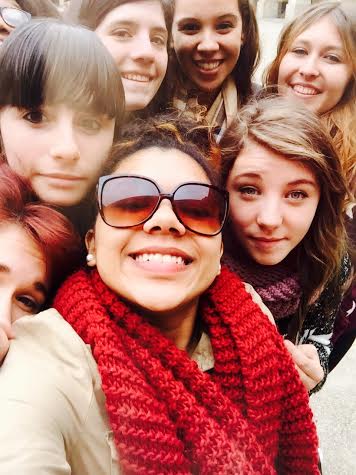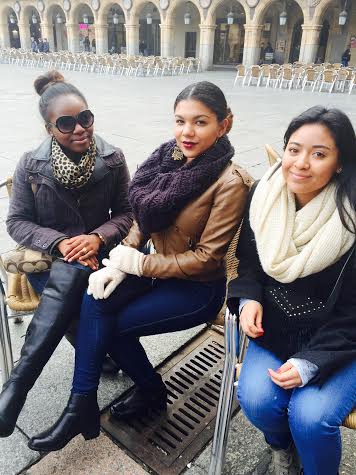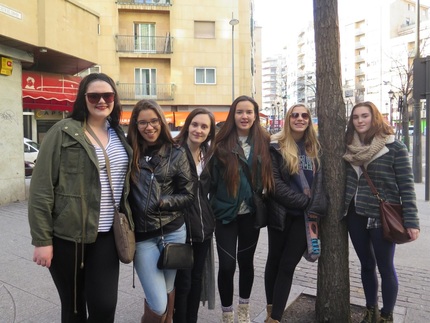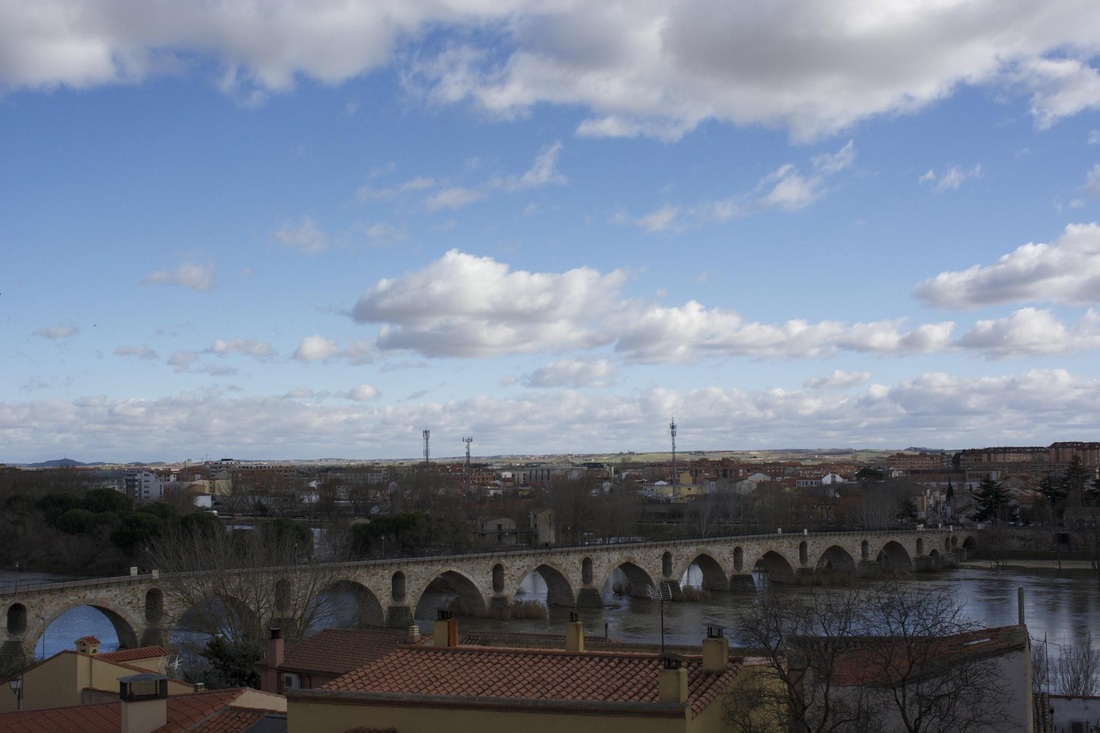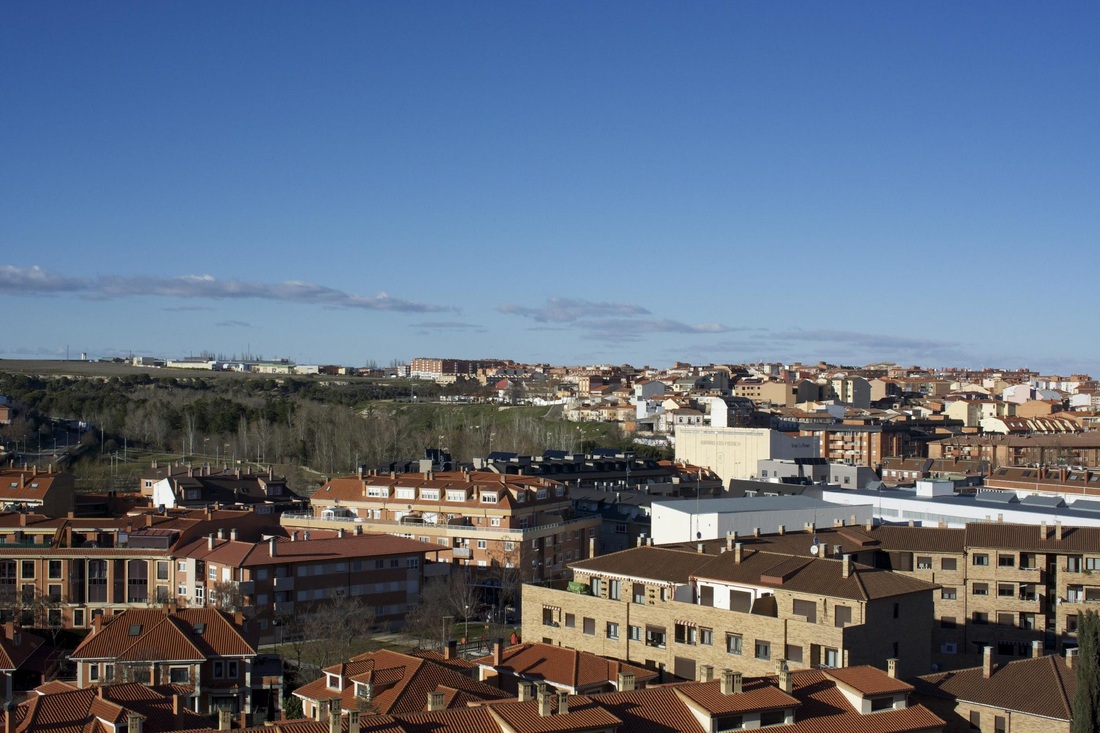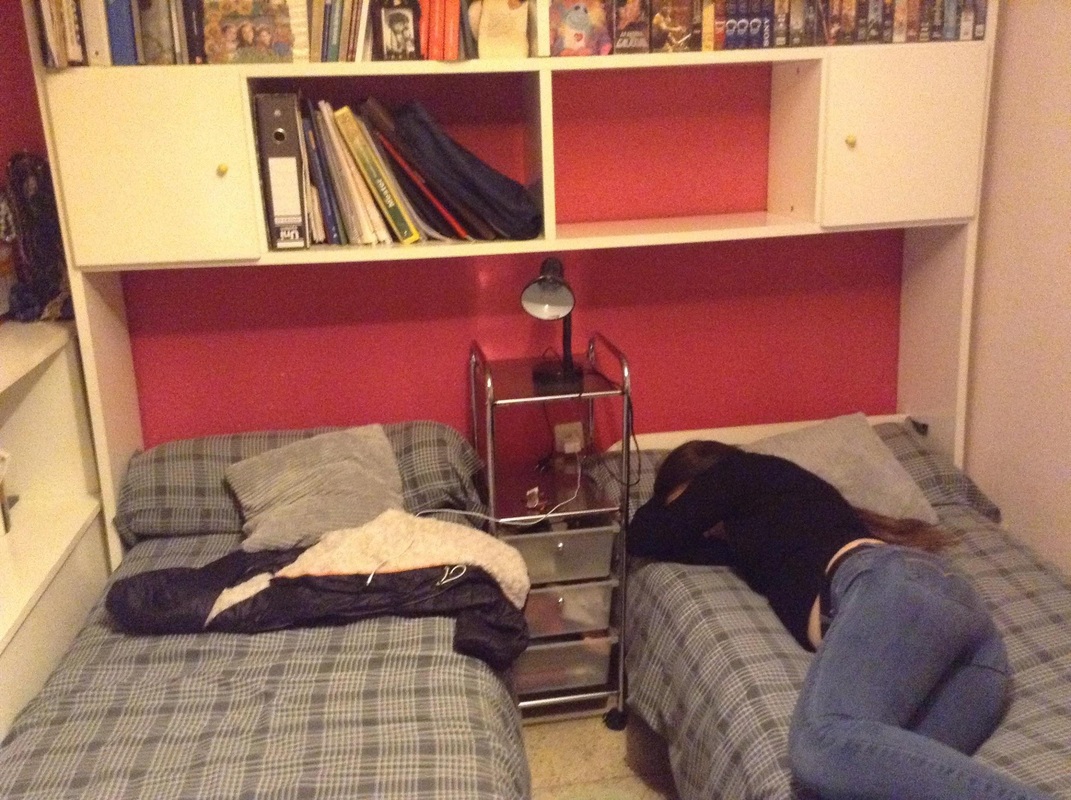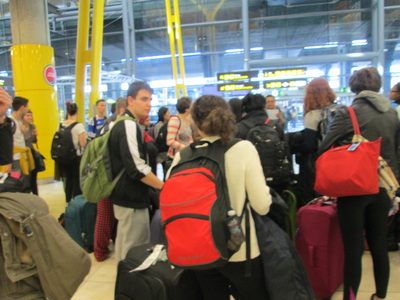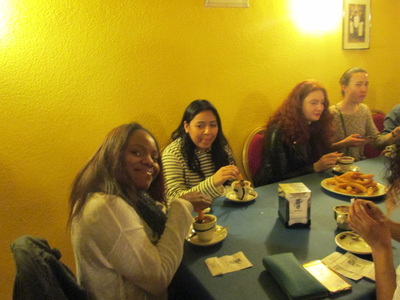In exploring a new place and trying to develop a more cosmopolitan worldview, trying to get more than the average tourist’s experience, we can look to a few things to get a better sense of a city’s cultural heritage. We can look at the locals, we can eat the local food, but we can also examine the architecture to tell us more about the region we are in, and the cultural and historic influence the region has on the local people, food, dress, and traditions, etc.
On our visit to Zamora, I was especially interested in the city’s architecture. Zamora was a Roman city established in the 9th century, situated in a strategic position on the Via de la Plata. The city was fought over during the Reconquest. The Romans lost the city but their architecture remained, and the 12th century Roman architecture is still a very central part of the city’s charm. Walking through the city I noticed many of the ornate Roman styles throughout, with the beautiful smooth stone buildings with tall skinny windows and scale-tiled domes. I was fascinated by how well preserved these buildings were and how they were adapted to serve the city. I saw stores built into the first floors of Roman style stone buildings. But along with the Roman architecture, there was almost every other style of architecture between Roman and our normal contemporary styles. In the plaza, there were many of these 19th century modernist buildings, contrasting the ornate Roman fashions. And surrounding the city were more plain apartment buildings, similar to those we might see in Boston.
The architecture was telling of the local culture, that the people of Zamora were a mix of traditional and contemporary, living in a very current modernized city, but preserving the traditional styles that make Zamora its own very unique city.
Visita a una escuela española By Michelle Souza
Visiting an actual Spanish school was beyond nerve racking. We didn’t know what to expect from a school in a different country, would it be like the US or would it be completely different? The school itself was completely different from ours. Firstly, it was a Catholic school; BHS is definitely not a Catholic school, so that was interesting. Something that was embarrassing on our part was how unprepared we were. The Spanish students had PowerPoint presentations made with facts and numbers, and we didn’t even have an idea on what we were going to talk about. After about 30 minutes we all took a break and we got to get to know each other in a more relaxed setting. A group of girls from the school and a few of BHS girls, including me, went out to get coffee. We introduced ourselves and talked about what we thought of the school. When we got back to school we were all more relaxed and felt comfortable talking about random things in Boston. It was overall a fun time and I left with about 10 new followers on Instagram.
A Taste of Salamanca – Athalia Lopez
On our visit to Zamora, I was especially interested in the city’s architecture. Zamora was a Roman city established in the 9th century, situated in a strategic position on the Via de la Plata. The city was fought over during the Reconquest. The Romans lost the city but their architecture remained, and the 12th century Roman architecture is still a very central part of the city’s charm. Walking through the city I noticed many of the ornate Roman styles throughout, with the beautiful smooth stone buildings with tall skinny windows and scale-tiled domes. I was fascinated by how well preserved these buildings were and how they were adapted to serve the city. I saw stores built into the first floors of Roman style stone buildings. But along with the Roman architecture, there was almost every other style of architecture between Roman and our normal contemporary styles. In the plaza, there were many of these 19th century modernist buildings, contrasting the ornate Roman fashions. And surrounding the city were more plain apartment buildings, similar to those we might see in Boston.
The architecture was telling of the local culture, that the people of Zamora were a mix of traditional and contemporary, living in a very current modernized city, but preserving the traditional styles that make Zamora its own very unique city.
Visita a una escuela española By Michelle Souza
Visiting an actual Spanish school was beyond nerve racking. We didn’t know what to expect from a school in a different country, would it be like the US or would it be completely different? The school itself was completely different from ours. Firstly, it was a Catholic school; BHS is definitely not a Catholic school, so that was interesting. Something that was embarrassing on our part was how unprepared we were. The Spanish students had PowerPoint presentations made with facts and numbers, and we didn’t even have an idea on what we were going to talk about. After about 30 minutes we all took a break and we got to get to know each other in a more relaxed setting. A group of girls from the school and a few of BHS girls, including me, went out to get coffee. We introduced ourselves and talked about what we thought of the school. When we got back to school we were all more relaxed and felt comfortable talking about random things in Boston. It was overall a fun time and I left with about 10 new followers on Instagram.
A Taste of Salamanca – Athalia Lopez
| Salamanca is a very beautiful, youthful, and intricate city. This city attracts people from all over the world and invites them to not only challenge themselves with their Spanish skills, but also welcoming all tourists warmly and with the traditional kiss on each cheek. Salamanca is by far the friendliest and safest city I have visited, ever. Even though the streets are small and sometimes confusing, there’s always someone along the way that will take time to help you if you have any questions on how to get around. Salamanca truly loves its tourists. My favorite thing about Salamanca is the cafeterias. Situated throughout the city, and always booming and crowded with people, it is truly one of the best places to get an authentic feel of what it’s like to be a “Salmantino”. I am sure they can tell a tourist by the accent. I often enjoy sitting at the bar and chatting with the barista about the highlights of the city and what kids en nuestra edad hacen. I came to the realization that all the coffee here is extremely strong and that all the baristas I’ve met are far more intrigued to meet someone from the USA than anywhere else. Apart from the amazing and delicious cafeterias, there are a lot of interesting and fun things to do here, from shopping in the Plaza Mayor, to sitting and chatting over a cup of coffee at “ La Tahona de la Abuela,” one can also visit the old and new cathedrals, and go sight seeing to get lost in history. There is something for everyone to do here. Oh! There is also a McDonald, Burger King and Starbucks here, so don’t worry about missing out on anything like that. One of the scariest moments I have had here where I felt the most vulnerable was when the teachers had arranged a visit to the local high school here, El Colegio de Avila, and we were set up to meet and greet students similar to our age, one to one. It was super wrecking and intense because when we entered the school, all eyes were on us. However, I accepted the challenge and decided to swallow my fear. And guess what? The girls there were so awesome and super sweet and were so surprised that I knew how to speak Spanish well, and I was able to make friends! One tip I give for future students who are going on this trip: put yourself out there, and surely you will make friends and be able to go out with people who know the city like the back of their hands!! |

